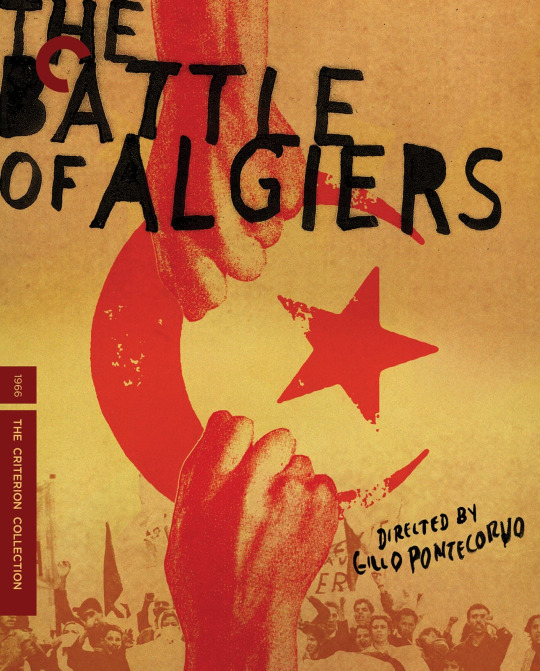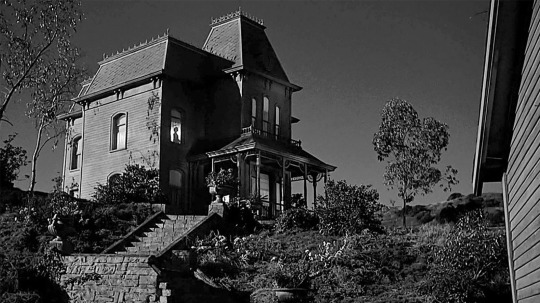#history of film
Note
What according to you are examples of historical films that got it right (not completely accurate, but say about more than 60%...i.e. above average accuracy)?
The Battle of Algiers is probably the gold standard here: they shot on location where the events had actually happened, they used a cast of primarily non-professional actors who had been eyewitnesses and participants in the events, they consulted with their actors extensively during film-making to make it as close to the real events as they could, and the film has sequences drawn from news footage and documentaries.

Similarly, for his film Bloody Sunday, Paul Greengrass cast survivors and relatives of the marchers to re-enact the Derry civil rights protest and ex-servicemen (many of whom who had served in Northern Ireland) as soldiers, and the script drew heavily from eyewitness accounts and the public records of the then-ongoing Saville Inquiry, which has helped the film stand up to quite a bit of criticism from conservative politicians in the U.K.
30 notes
·
View notes
Text
youtube
The Magic Lantern (1903) Georges Méliès
The Magic Lantern (French: La Lanterne magique ) is a 1903 film by Georges Méliès , it is film number 520-524 in the Star Film catalog; it is a kind of homage that Georges Méliès pays to the Magic Lantern and the Commedia dell'Arte. After The Countryman and the Cinematograph and Uncle Josh at the Moving Picture Show (1902) it is one of the earliest examples of metacinema (or would it be more accurate to say metaprecinema?).
The film consists of a single scene/frame, although in those years filmmakers were beginning to use close-ups more and more casually, Méliès continues (and will continue until his last films) , to shoot the whole scene in a single frame. Méliès does not make use of editing except to achieve his special effects. Because of this, he is forced to adopt a trick that we will find in other films: instead of bringing the camera closer to objects to show us their details, Méliès enlarges objects, this explains the disproportionate size of the magic lantern.
Another example is found in this scene from the film Bluebeard, where Méliès, instead of making a close-up on the bloody key, prefers to enlarge it.
3 notes
·
View notes
Text

"The first Bond movie and the first Beatle single, Dr No and "Love Me Do", were both issued on October 5, 1962, and from this remarkable coincidence, John Higgs weaves a daring, dazzlingly entertaining pop cultural critique. It’s smart and analytical, yes, but it’s also enormously good fun. There’s something provocative or revelatory on every page."
#uwlibraries#history books#british history#cultural history#gender history#history of music#history of film
10 notes
·
View notes
Text
The First 10 Werewolf Movies Ever Made - HubPages
https://discover.hubpages.com/entertainment/The-First-10-Werewolf-Movies-Ever-Made
Hello, hello, I wrote a new article! All you werewolf fans out there can rejoice!
#film history#movie history#film#filmmaking#history of film#silent movies#movies#old movies#classic movies#the wolf man#frankenstein meets the wolf man#werewolf films#werewolf movies#werewolf#werewolves#universal studios#lon chaney
4 notes
·
View notes
Text
A murder mystery film set in a medieval village. After an outbreak of plague, the villagers make the decision to shut their borders so as to protect the disease from spreading (see the real life case of the village of Eyam). As the disease decimates the population, however, some bodies start showing up that very obviously were not killed by plague.
Since nobody has been in or out since the outbreak began, the killer has to be somebody in the local community.
The village constable (who is essentially just Some Guy, because being a medieval constable was a bit like getting jury duty, if jury duty gave you the power to arrest people) struggles to investigate the crime without exposing himself to the disease, and to maintain order as the plague-stricken villagers begin to turn on each other.
The killer strikes repeatedly, seemingly taking advantage of the empty streets and forced isolation to strike without witnesses. As with any other murder mystery, the audience is given exactly the same information to solve the crime as the detective.
Except, that is, whenever another character is killed, at which point we cut to the present day where said character's remains are being carefully examined by a team of modern archaeologists and historians who are also trying to figure out why so many of the people in this plague-pit died from blunt force trauma.
The archaeologists and historians, btw, are real experts who haven't been allowed to read the script. The filmmakers just give them a model of the victim's remains, along with some artefacts, and they have to treat it like a real case and give their real opinion on how they think this person died.
We then cut back to the past, where the constable is trying to do the same thing. Unlike the archaeologists, he doesn't have the advantage of modern tech and medical knowledge to examine the body, but he does have a more complete crime scene (since certain clues obviously wouldn't survive to be dug up in the modern day) and personal knowledge from having probably known the victim.
The audience then gets a more complete picture than either group, and an insight into both the strengths and limits of modern archaeology, explaining what we can and can't learn from studying a person's remains.
At the end of the film, after the killer is revealed and the main plot is resolved, we then get to see the archaeologists get shown the actual scenes where their 'victims' were killed, so they can see how well their conclusions match up with what 'really' happened.
#film ideas#plotbunny#murder mystery#detective stories#period dramas#middle ages#history#archaeology
20K notes
·
View notes
Text
Hollywood: Separating Fact And Myth.
Hollywood is built upon myth. This myth is rooted in American exceptionalism. The foundational American ideology that they are the greatest in the world as a nation and stand as a global power unrivalled by any other is the root of the American dream. America is a land of aspiration and the promise of a better life. This belief that America is a place of wish and dream fulfilment predates Hollywood and goes back to the formation of the nation. ‘The land of the free’ and the ‘home of the brave’. (Star Spangled Banner, Scott-Key)
The core promise is ingrained in the national anthem. It was no wonder the concept of exceptionalism would transfer to the landscape of filmmaking in the early 20th century. It really comes down to quantity and the number of people in America. Quantity plays a huge role in the reason Hollywood is the epicentre of filmmaking globally. America is a large country with 50 states.

Above - Hollywood Hills in the 1920s.
Starting in the 1850s it became a magnet for film studios. By the 1920s most film studios were on the west coast. California as a state has great weather and an infrastructure that can inhabit the backdrop of any kind of film. (Silver Screen Magazine) From the outside paired with the American dream and the aspiration of achieving success Hollywood is on the surface the land of infinite opportunities.
This is one of the reasons why there have been so many backstage films based on the process of becoming a big star. A Star Is Born is one of the most popular examples of this prolific film and television trope. Of the four versions made only the first take is centred on acting and is the one I will focus on in this blog. The other three deal with the character of Esther becoming a singer.
youtube
Taking a deeper look at why the rags to riches stories of Hollywood take shape there are a few factors to take into consideration. First of all films are made to tell stories which follow conventions and formats. There is a formula for creating a film. There is a finite story. This can of course be applied to any type of storytelling. There is a fairytale quality to the story of ‘A Star Is Born’. Esther comes from nothing. She moves to Hollywood and after a number of struggles and scenes of adversity she meets Norman Maine who gets her a screen test and she becomes an increasingly more popular star while his life and film career is in decline leading to his eventual death and her rebirth as a strong and transformed person.
A core theory that can be applied to the narrative structure of the mythologising of these rise to fame stories is Joseph Campbell’s principle of ‘The Hero’s Journey’. This was outlined in his 1949 book The Hero With A Thousand Faces. Campbell noted that all stories followed the same template throughout their narratives. (Aslan) While in today’s cinematic landscape Campbell’s theory is largely applied to fantasy films it can really be applied to any film. Esther Blodgett is the hero of her story and hers is very much the hero’s journey.
However it is not alone rise to fame films that lend to the mythologising of the reality of Hollywood. Pathe newsreels were shown prolifically before films in the Golden Age of Hollywood. These sleekly edited and polished pieces added to the aspirational qualities and the images of glamour and opulence presented in the ornate, art deco location. The media also aided with shaping the mythos of the town.
youtube
While magazines were filled with glamorous photos of stars with well curated interviews with the stars. As in modern times they were filled with gossip about the private lives of those featured therein. Radio shows and television also fed into the fairy tale world of Hollywood.
Works Cited
Aslan, Marco. “What makes a hero? - Matthew Winkler.” YouTube, 4 December 2012, https://www.youtube.com/watch?v=Hhk4N9A0oCA. Accessed 7 January 2024.
Author, Unknown. “How did Hollywood become the center of the film industry?” Silver Screen Magazine, 2022, https://www.silverscreenmagazine.com/hollywood-the-center-of-film-industry/. Accessed 6 January 2024.
Key, Francis Scott. “NMAH | Star-Spangled Banner: Flag that Inspired National Anthem.” National Museum of American History, 2023, https://amhistory.si.edu/starspangledbanner/the-lyrics.aspx. Accessed 6 January 2024.
Martino, Alison. “Hollywood - Sound Version (1965).” YouTube, 13 April 2014, https://www.youtube.com/watch?v=n_PzO-QEKJQ. Accessed 9 January 2024.
Stoner, Alyson. “The Psychology and Aftermath of Auditions | Dear Hollywood Episode 8.” YouTube, 29 September 2023, https://youtu.be/l17Mu1jhSLo?si=C6k99KOPDG3yEQdF. Accessed 8 January 2024.
Wellman, William A., et al. “A Star Is Born (1937) Original Trailer [FHD].” YouTube, 23 December 2022, https://www.youtube.com/watch?v=SDsV85-UqO4. Accessed 9 January 2024.
Zerbe, Noah. “American Exceptionalism.” YouTube, 7 December 2021, https://www.youtube.com/watch?v=jnFLV1WloOQ. Accessed 6 January 2024.
1 note
·
View note
Text

"R. B. Chadwick Censor of Moving Picture Films," Edmonton Journal. March 8, 1913. Page 16.
---
Superintendent of Delinquent Children Appointed to Protect Public Against Showing of Pictures of on Immoral or Criminal Nature
----
R. B. Chadwick, superintendent of delinquent children for the province, has been appointed by order-in-council censor of moving picture films for Alberta Films bearing the stamp of the censor of other provinces are admitted without further inspection, but films being exhibited without having passed a censor are liable to seizure. Power is given to the police to seize films not bearing the censors' stamp. Mr. Chadwick acted as censor during the exhibition of the pictures showing the life and adventures of Lieut. Petrosino, and about 200 feet were cut out of the film.
Mr. Chadwick states that very few films come through to Alberta without having been before the censors in Ontario or New York city. The police draw the attention of Mr. Chadwick to any pictures that they think should not be exhibited, and he passes judgment upon them.
Picture Men Satisfied
It is probable that other censors will be appointed in the cities of Calgary, Lethbridge, and Medicine Hat, with a central bureau through which, all reports of the censorship of films will pass. There are approximately between 50 and 60 picture shows in the province. Edmonton has the biggest number, there being a dozen in the city, while Calgary has six, and Lethbridge four. Almost every town of any importance also has its picture show.
A. R. Lawrence, manager of the Bijou theatres, who opened the first picture show in Edmonton five years ago, states that the moving picture men have the utmost confidence in Mr. Chadwick's judgment. He was under the impression that a board of three censors would be appointed, but If Mr. Chadwick was to exercise the right alone he would be perfectly satisfied..
Censors Differ.
He thought that as far as possible the censorship of one province should hold good for another. While Mr. Chadwick and the deputy attorney-general saw nothing objectionable in the film showing Dante's Inferno, which had a long run in Edmonton, the authorities in Vancouver refused to allow it to be shown unless it was shown in a church and was explained. by a minister, while in Winnipeg the authorities asked that 82 feet should be cut out, eliminating a scene in which one of the characters has his eyes burned out.
#edmonton#calgary#lethbridge#film censorship#government censor#censor#movie theatres#moving picture history#history of film#crime and punishment in canada#history of crime and punishment in canada#regulation of morality
0 notes
Text
Hbomberguy did a pretty good job pointing out how Somerton has tried to take up the air of modern queer creators, stealing the works they made to little or no money or exposure, and using them to bolster his own fame. It's a truly reprehensible act.
But I feel like it's also important to briefly touch on what he stole from the past.
The Celluloid Closet is a backbone text on queerness and cinema. Like, if you're at all interested in the subject, please read the book, and watch the doc. Yes, the language will be outdated. It was written in 1981 and the doc published in 1995. Language evolves. I was fortunate enough to both read the book and see the documentary in the early 2000s, when I attended university.
It was written by Vito Russo, who held a Masters in film and a desire to fight for queer rights after witnessing the Stonewell riots. The Celluloid Closet was first a live lecture presentation, then a book. He would try to get the book made into a documentary in the early years, and after he died, others picked up that torch to carry on his work and to pay respect to the man.
Vito Russo was also one of the co-founders of GLAAD. He was a co-founder of ACT UP. You may have, if you've watched documentaries or seen news stories about the AIDS crisis, seen parts of his speech, Why We Fight. He protested, advocated, and educated even as people he knew and loved died, and he himself was dying.
As Hbomberguy notes in his doc, he would go on to pass in 1990. This was a man who fought his ass off, even while dying, for a better tomorrow and better representation.
The fact that Somerton stole his work is beyond insulting to the queer history, and queer film history, that he purports to give a shit about.
11K notes
·
View notes
Text





Analogues I took at Versailles last Summer
#photography#places#Versailles#original photography#35mm#france#classical art#art history#marie antoinette#rococo#original photographers#my photography#olga's diary#film photography#analogue#analog photography#light academia#princesscore#royalcore#gardens#architecture#travel#photographers on tumblr#cottagecore
7K notes
·
View notes
Text
Does adding a blade make your bow an effective melee weapon?
It definitely makes it an iconic one!
Patreon - YouTube
6K notes
·
View notes
Note
With Secret Invasion coming out, I've seen a lot of stuff talking about "The Invaders" TV show & "Invasion of the Body Snatchers" in the 50s & 60s and how they were about McCarthyism, presumably anti- (also Indiana Jones 4 & The Manchurian Candidate). Do you know what they are talking about? How do you criticize McCarthyism with a story where there actually IS a conspiracy to infiltrate enemies into the country/society?
This is actually a rather complicated issue of history and interpretation.

It is true that the advent of the Cold War saw the emergence of a sub genre of horror/sci-fi that featured extraterrestrial invasions that operated through subverting humans, whether as part of the Blob or by becoming Pod People or what have you.
The tricky thing is that the way the economics/politics worked is that both the right and the left could see why they wanted to in the movies: for more conservative folks, the alien subversion was an allegory for Communist infiltration, scenes of masses of pod people advancing on the protagonists were an allegory for the Soviet exaltation of the masses against the American championing of the individual, etc. For more left-leaning folks, it was all about McCarthyism, new research into the psychology of totalitarianism, and the Paranoid Style in American Politics.
As for the filmmakers, I don’t think they were actually thinking about it much, unless the screenwriter was a particularly allegorical blacklistee. To quote John Goodman in Trumbo, “Wanna keep me from hiring union? I'll go downtown, hire a bunch of winos and hookers. It doesn't matter. I make garbage! You wanna call me a pinko in the papers? Do it! None of the people that go to my fucking movies can read!”
22 notes
·
View notes
Text
youtube
The Life and Passion of Christ (1903) Ferdinand Zecca & Lucien Nonguet
The Life and Passion of the Christ (French: La Vie et la passion de Jésus-Christ ) is a film produced by Pathé in 1903 and directed by Ferdinand Zecca and Lucien Nonguet
The film tells the most important episodes in the life of Jesus in 35 scenes. It was the second film ever released in France about the life of Christ (the first one was The Passion of the Lumière brothers.
The direction of La Vie et la passion de Jésus-Christ had been entrusted to Lucien Nonguet under the supervision of Ferdinand Zecca, but when Pathé refused Zecca the opportunity to produce his own films, Zecca left the company to move to Gaumont, and Nonguet finished the film without his supervision anymore.
The pictures in the film draw direct inspiration from the Bible illustrated by Gustave Doré; these, combined, form the first feature film in the history of cinema, but at the time, versions reduced to 12 or 20 pictures were marketed.
The film is also the first full-length color film ever made. The new coloring system developed at Pathé was used for the occasion: the à pouchoir coloring: from an original copy of the film, silhouettes were cut out corresponding to the areas to be filled with a given color, which was applied to the film by means of a roller soaked in coloring substances.
2 notes
·
View notes
Text
its so crazy that for the last 5 years a small but annoyingly vocal online group has been acting like mob movies of all things are pretentious and inaccessible cinema. yeah the godfather is kinda slow but these are movies about criminals who shoot people
#that family guy bit is right it does insist upon itself but it has a valid point to insist etc etc#crow.txt#side note if you do wanna watch a good mob flick and the godfather was a bit too slow for you please watch goodfellas#its one of my favorite films of all time i love it so much#while i do like the godfather and i recognize how important it was for film history i like goodfellas a bit more
3K notes
·
View notes
Text

"A renowned authority on the Hollywood blacklist, Larry Ceplair brings decades of research and a typically fresh and independent eye to this new overview and analysis. The book offers vivid history and engaged but nuanced consideration of the moral and political issues involved, expert discussion of lives that were changed forever (including that of Dashiell Hammett), and insights on the phenomenon's continuing relevance given today's entertainment industry practice and constitutional and cultural divides."
10 notes
·
View notes
Text
This old article of mine has been updated to include Netflix's Wednesday!
#the addams family#charles addams#the addams family movie#the addams family musical#wednesday#netflix wednesday#wednesday on netflix#wednesday addams#pugsley addams#morticia addams#gomez addams#lurch addams#cousin itt#grandmama addams#hubpages#film history#history of film#movie history#film#filmmaking#cinema history#movies#cinema#comic strips#addams family#netflix#flashbackfriday
12 notes
·
View notes
